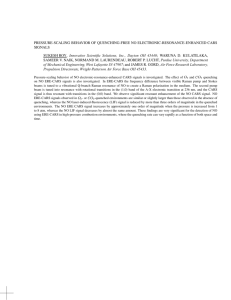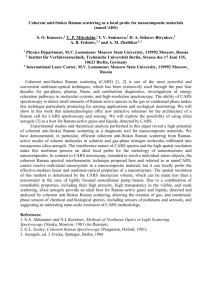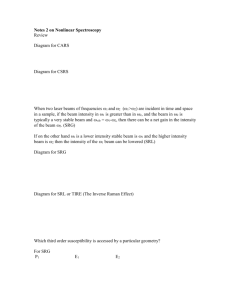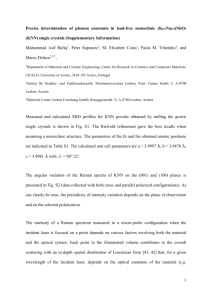Supplementary Materials
advertisement
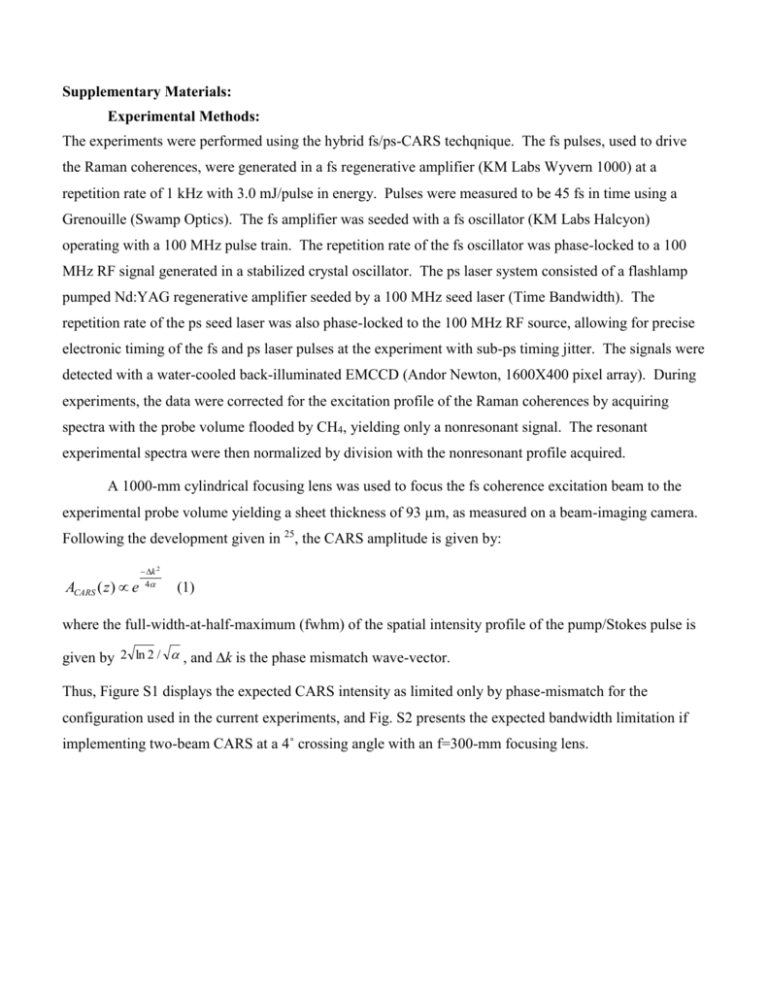
Supplementary Materials: Experimental Methods: The experiments were performed using the hybrid fs/ps-CARS techqnique. The fs pulses, used to drive the Raman coherences, were generated in a fs regenerative amplifier (KM Labs Wyvern 1000) at a repetition rate of 1 kHz with 3.0 mJ/pulse in energy. Pulses were measured to be 45 fs in time using a Grenouille (Swamp Optics). The fs amplifier was seeded with a fs oscillator (KM Labs Halcyon) operating with a 100 MHz pulse train. The repetition rate of the fs oscillator was phase-locked to a 100 MHz RF signal generated in a stabilized crystal oscillator. The ps laser system consisted of a flashlamp pumped Nd:YAG regenerative amplifier seeded by a 100 MHz seed laser (Time Bandwidth). The repetition rate of the ps seed laser was also phase-locked to the 100 MHz RF source, allowing for precise electronic timing of the fs and ps laser pulses at the experiment with sub-ps timing jitter. The signals were detected with a water-cooled back-illuminated EMCCD (Andor Newton, 1600X400 pixel array). During experiments, the data were corrected for the excitation profile of the Raman coherences by acquiring spectra with the probe volume flooded by CH4, yielding only a nonresonant signal. The resonant experimental spectra were then normalized by division with the nonresonant profile acquired. A 1000-mm cylindrical focusing lens was used to focus the fs coherence excitation beam to the experimental probe volume yielding a sheet thickness of 93 µm, as measured on a beam-imaging camera. Following the development given in 25, the CARS amplitude is given by: ACARS ( z ) e k 2 4 (1) where the full-width-at-half-maximum (fwhm) of the spatial intensity profile of the pump/Stokes pulse is given by 2 ln 2 / , and k is the phase mismatch wave-vector. Thus, Figure S1 displays the expected CARS intensity as limited only by phase-mismatch for the configuration used in the current experiments, and Fig. S2 presents the expected bandwidth limitation if implementing two-beam CARS at a 4˚ crossing angle with an f=300-mm focusing lens. CARS Signal Intensity (normalized) 1 0.9 0.8 0.7 0.6 0.5 0.4 0 100 200 Raman Shift (cm-1) 300 FIG. S1. CARS intensity expected as a function of Raman shift for the reported experimental arrangement, as calculated by Eq. 1 due to the slight phase-mismatch. The actual shape of the excitation profile in the experiment was measured by flooding the CARS Signal Intensity (normalized) probe volume with a nonresonant gas, CH4. 1 0.8 0.6 0.4 0.2 0 0 500 1000 1500 2000 Raman Shift (cm-1) 2500 3000 FIG. S2. CARS intensity expected as a function of Raman shift for a 300-mm focusing lens (pump/Stokes sheet thickness of ~28 µm fwhm) and a crossing angle of 4˚.
